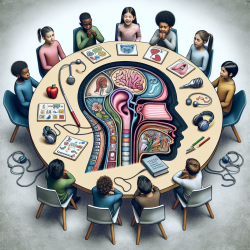Introduction
Adolescence is a critical period of growth where various factors contribute to the development of mental health and overall well-being. Recent research, particularly the study titled "The association between physical activity and subjective well-being among adolescents in southwest China by parental absence: a moderated mediation model," highlights the importance of physical activity, school connectedness, and resilience in enhancing adolescents' subjective well-being. This blog explores how practitioners can leverage these findings to improve their therapeutic interventions and support adolescent development.
Key Findings from the Research
The study conducted in southwest China examined the impact of physical activity on adolescents' subjective well-being, focusing on the roles of school connectedness and resilience. The research utilized a cross-sectional survey of 3,143 adolescents and employed a structural equation model to analyze the data. Key findings include:
- Physical Activity: Regular participation in physical activities was positively associated with improved subjective well-being among adolescents.
- School Connectedness: This factor mediated the relationship between physical activity and well-being, indicating that a supportive school environment enhances the positive effects of physical activity.
- Resilience: As an internal development asset, resilience moderated the effects of physical activity on well-being, particularly in adolescents with varying levels of parental presence.
Implications for Practitioners
Practitioners working with adolescents can draw valuable insights from this study to enhance their therapeutic approaches:
- Encourage Physical Activity: Incorporate regular physical activities into therapy sessions or school programs. Activities like sports, dance, or structured play can significantly boost adolescents' mental health.
- Foster School Connectedness: Work with schools to create a supportive environment where students feel valued and connected. This can be achieved through mentorship programs, peer support groups, and teacher-student engagement activities.
- Build Resilience: Develop resilience-building programs that help adolescents adapt to challenges. This could involve skills training in problem-solving, emotional regulation, and stress management.
Encouraging Further Research
While the study provides valuable insights, it also highlights the need for further research. Practitioners are encouraged to explore additional factors that may influence adolescent well-being, such as cultural differences, socioeconomic status, and family dynamics. Longitudinal studies could provide deeper insights into the causal relationships between physical activity, school connectedness, and resilience.
Conclusion
The findings from this research underscore the importance of a holistic approach to adolescent well-being, integrating physical activity, supportive school environments, and resilience-building. By applying these insights, practitioners can better support adolescents in achieving improved mental health and overall well-being.
To read the original research paper, please follow this link: The association between physical activity and subjective well-being among adolescents in southwest China by parental absence: a moderated mediation model.










